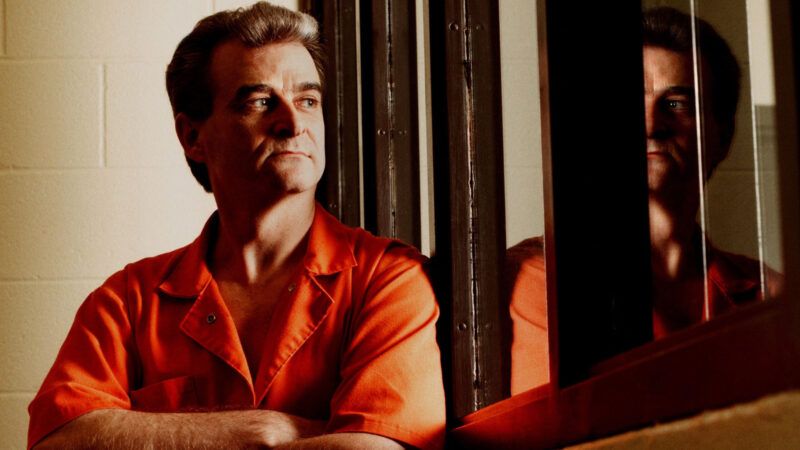Randy Weaver Dies
In the infamous Ruby Ridge standoff, federal agents killed his wife and son.

Randy Weaver died Wednesday, just three months shy of what would have been the 30th anniversary of the 1992 standoff that thrust him into the national spotlight. He was 74.
Born in Iowa in 1948, Weaver enlisted in the Army at age 20, near the onset of the Vietnam War. He was sent to Fort Bragg, North Carolina, where he became a Green Beret, but he was never sent overseas. While he was home on leave in 1970, he reconnected with an old girlfriend, Vicki Jordison, whom he would marry the following year, after leaving the military.
Randy and Vicki had each been raised religious, but together they grew more radical. By the early 1980s, they were speaking of the endtimes, warning that the government would soon be trying to kill all Christians, and exhorting friends and family to move off the grid to escape the coming dictatorship. In 1983, the Weavers did just that. The family, which at that point included children Sara, Samuel, and Rachel, left behind a comfortable suburban life to build a modest cabin on a bluff in the northern Idaho panhandle about 40 miles south of the Canadian border. The bluff was called Ruby Ridge.
By the time they got to Idaho, the Weavers' beliefs meshed with those of the racist Christian Identity movement. During the 1980s, Randy showed up at some meetings of the white supremacist Aryan Nations organization, and at one of these meetings he met and became friends with "Gus Magisano," a motorcyclist and gun trafficker. "Gus" was actually Kenneth Fadeley, an informant for the Bureau of Alcohol, Tobacco and Firearms (BATF). By Weaver's telling, Fadeley repeatedly pressured him to illegally saw down two shotgun barrels; after initially refusing, Weaver, hard up for cash, acquiesced. (Fadeley would later claim at trial that Weaver had approached him.)
When Weaver was arrested, the government offered to drop the weapons charges if he would become an informant against the Aryan Nations. Weaver refused, posted bail, and holed up in the cabin. For the next 16 months, BATF agents watched the Weavers' home, with video surveillance, sniper postings, and more.
Early in the morning on August 21, 1992, three deputy U.S. marshals came onto the property in full camouflage, armed with M-16s. Sam Weaver, then 14, was hunting with Kevin Harris, a friend of the family whom Randy had taken in, when Sam's dog Striker took off after the marshals; Sam and Kevin, thinking he was chasing a deer, ran after. What happened next is in dispute, but Striker, Sam, and one of the marshals, William Degan, were killed in the ensuing encounter.
In the aftermath, the FBI took over, bringing in its elite Hostage Rescue Team. In the process, the agency severely softened its "rules of engagement" to what a congressional inquiry would later characterize as "virtual shoot-on-sight orders." With these rules in place, an FBI sniper opened fire as Randy was entering the cabin. The shot missed Randy and struck Vicki as she was holding their newest daughter, 10-month-old Elisheba. Vicki was killed instantly.
An 11-day standoff followed. After he surrendered, Randy was arrested and tried on 10 counts, including the murder of Degan, but he was acquitted of all but two minor offenses related to the original weapons charge. Subsequent congressional inquiries were scathing, reporting that the government had violated the Weavers' constitutional rights and finding "numerous shortcomings" and "inadequacies" in the government's response.
Any civil libertarian hopeful that this incident would spur meaningful changes in how the government dealt with fringe groups would have their hopes dashed in short order. In February 1993, weeks into President Bill Clinton's administration and barely six months after Randy Weaver's surrender, the BATF descended upon a compound in Waco, Texas, occupied by a religious group called the Branch Davidians. What was supposed to be a quick raid instead became a disastrous 51-day standoff; it ended with a fire that killed 80 Branch Davidians, including 21 children.
The years since have not been banner years for law enforcement either. Even before 9/11, the federal surveillance state was expanding rapidly. During Barack Obama's presidency, "fusion centers," combining federal and state law enforcement resources, kept tabs on all manner of groups as possible terrorists. Just last month, a much-vaunted prosecution of a militia for trying to kidnap Michigan Gov. Gretchen Whitmer fell apart when it came out that the militia members pushing the plan most fervently were FBI informants.
Did the Weavers harbor objectionable beliefs? Sure. (After Randy's initial arrest, Vicki sent the U.S. attorney a letter quoting Robert Mathews, the leader of racist terrorist group The Order.) But there is a big difference between thinking despicable thoughts and carrying out despicable acts. Again and again, key moments of the Weavers' story were catalyzed by government actions: the possible entrapment over a minor gun charge, the deployment of armed U.S. marshals to their property, the haphazard rules of engagement that led directly to Vicki Weaver's death. We don't remember Randy Weaver's name 30 years later because of the things he believed. We know it because he was the victim of an overreaching federal government that can be every bit as dangerous as the groups it was trying to stop.


Show Comments (75)